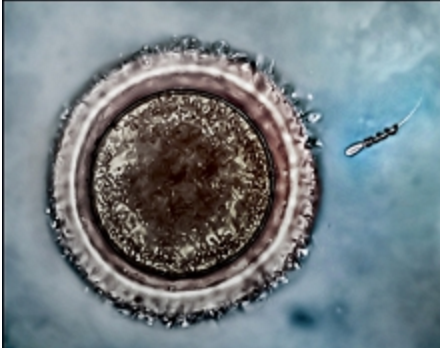 Technology like 3D printing is making huge strides in numerous areas of industry, as we point out to you on the half hour. It has the ability to transform manufacturing, and change the bigger picture in so many ways, making life easier and more streamlined. Today we often see this about to happen where we least expect it, from ways to fix pesky potholes easily without waiting in long lines on the highway, to 3D printed homes and cars on the horizon, and even incredible cosmetic fixes like 3D printed hair.
Technology like 3D printing is making huge strides in numerous areas of industry, as we point out to you on the half hour. It has the ability to transform manufacturing, and change the bigger picture in so many ways, making life easier and more streamlined. Today we often see this about to happen where we least expect it, from ways to fix pesky potholes easily without waiting in long lines on the highway, to 3D printed homes and cars on the horizon, and even incredible cosmetic fixes like 3D printed hair.
So we are aware some pretty amazing changes are taking place, but there are still some serious areas in medicine where many have begun to lose hope. Infertility is an issue many couples face today, and it’s incredibly heartbreaking and stressful to find out month after month, year after year, that progeny may not be in the cards for some. That’s hard to accept for most, and has led to a booming industry centering around specialists, procedures, and myriad, pricey pharmaceuticals to try out. For men, infertility can be a huge source of emotional distress and even shame; however, it looks like 3D printing may be able to help in offering a solution.
According to German researchers from the Institute for Integrative Nanosciences at IFW Dresden, their micro-motors may offer a way to get sluggish sperm where they need to go. In a recent and fascinating project, the researchers 3D printed the spermbots on a Nanoscribe Photonic Professional GT system, forming them via small metal constructions–all as outlined in a recent paper published in ACS Journal Nano Letters, ‘Cellular Cargo Delivery: Toward Assisted Fertilization by Sperm-Carrying Micromotors,’ by Mariana Medina-Sánchez, Lukas Schwarz, Anne K. Meyer, Franziska Hebenstreit, and Oliver G. Schmidt.
“We present artificially motorized sperm cells—a novel type of hybrid micromotor, where customized microhelices serve as motors for transporting sperm cells with motion deficiencies to help them carry out their natural function,” state the researchers in their paper. “Our results indicate that metal-coated polymer microhelices are suitable for this task due to potent, controllable, and nonharmful 3D motion behavior.”
Teaming up with Nanoscribe, the world technology and market leader in 3D printing on the nano- and microscale, the scientists may be bringing an end to a world of frustration for many with what sounds like a logical enough solution—they are making it possible for healthy sperm to ‘swim.’
“With the Photonic Professional GT, time and time again we open up completely new fields of application,” says Nanoscribe CEO Martin Hermatschweiler. “Research results from our customers–for example the spermbots from IFW Dresden–show the versatile future potential of these systems. For many of these groundbreaking applications there are simply no alternative fabrication methods.”
Of course, the whole project sounds easy enough in concept, but bringing it to fruition physically in the lab involved great challenge. Their decided course of action for creating the spermbots was with 3D laser lithography. Employing so many of the benefits derived from 3D printing, the scientists were able to explore different forms and prototypes until they settled on making plastic helices that are coated with a metal layer, offering magnetic properties which allow them to be manipulated and moved, transporting sperm to ultimately fertilizing the egg. The spermbots actually maneuver the sperm by latching on to and wrapping around the tail.
“Despite the fact that there still remain some challenges on the way to achieve successful fertilization with artificially motorized sperms, we believe that the potential of this novel approach toward assisted reproduction can be already put into perspective with the present work.”
The actual printing process itself involves a two photon polymerization where the photosensitive resist cures in the exposed areas and can later be removed in a bath of developing chemicals. While the process will require much more study and refining before they begin trials with humans, it’s thought that this has the potential to be much more effective than other routes such as artificial insemination or in-vitro fertilization, which have very low success rates. What the researchers are seeing in the lab so far is very promising—and could certainly change the lives of many—as well as helping to create many more. Discuss this new technology in the 3D Printed Spermbots forum over at 3DPB.com.
Subscribe to Our Email Newsletter
Stay up-to-date on all the latest news from the 3D printing industry and receive information and offers from third party vendors.
You May Also Like
Precision at the Microscale: UK Researchers Advance Medical Devices with BMF’s 3D Printing Tech
University of Nottingham researchers are using Boston Micro Fabrication‘s (BMF) 3D printing technology to develop medical devices that improve compatibility with human tissue. Funded by a UK grant, this project...
3D Printing Webinar and Event Roundup: April 21, 2024
It’s another busy week of webinars and events, starting with Hannover Messe in Germany and continuing with Metalcasting Congress, Chinaplas, TechBlick’s Innovation Festival, and more. Stratasys continues its advanced training...
3D Printing Webinar and Event Roundup: March 17, 2024
It’s another busy week of webinars and events, including SALMED 2024 and AM Forum in Berlin. Stratasys continues its in-person training and is offering two webinars, ASTM is holding a...
3D Printed Micro Antenna is 15% Smaller and 6X Lighter
Horizon Microtechnologies has achieved success in creating a high-frequency D-Band horn antenna through micro 3D printing. However, this achievement did not rely solely on 3D printing; it involved a combination...































